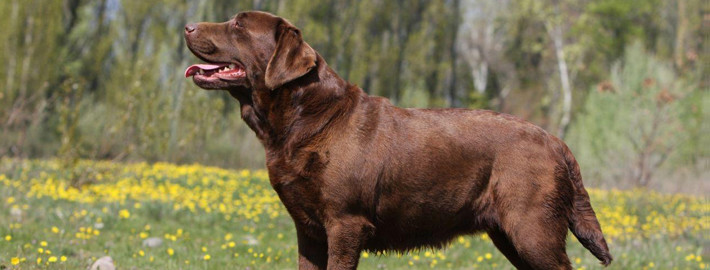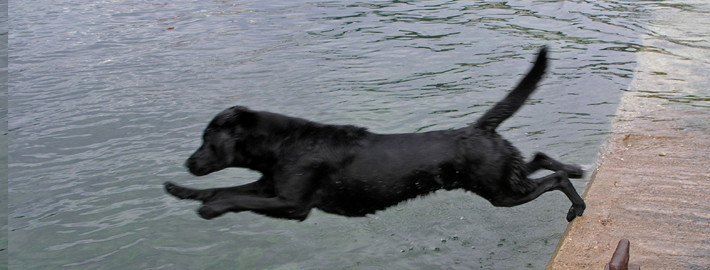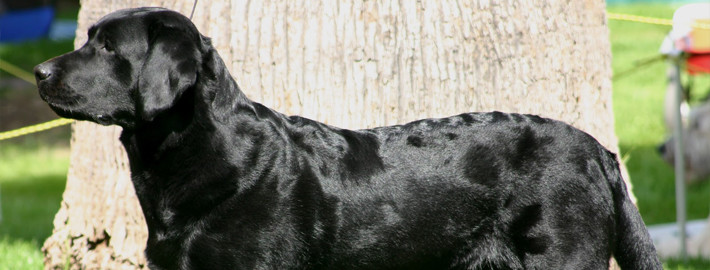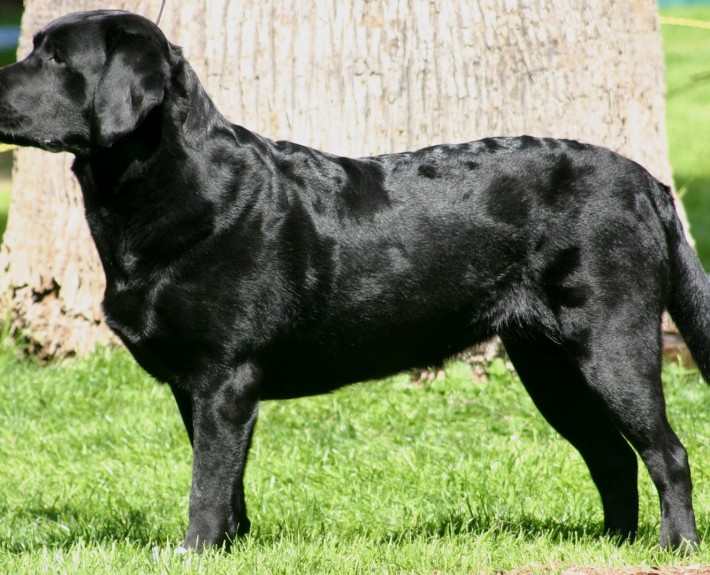What makes the Labrador Retriever Unique?
The Labrador is a moderate dog, not extreme in any way. It is square or slightly longer than tall, of fairly large bone and substance. Its broad head and strong jaws should enable it to carry the largest game birds, such as Canada geese. Its heavy body set and strong legs enable it to swim and run powerfully. Its coat, which is short, straight and dense with a soft undercoat, is weatherproof and helps to protect it from icy waters. The Lab is a working retriever and should possess style without over refinement and substance without clumsiness. Few breeds so richly deserve their popularity as the Labrador retriever. Devoted, obedient and amiable, the Lab is good with children, other dogs and other pets. It will be a calm house dog, playful yard dog and intense field dog, all on the same day. It is eager to please, enjoys learning and excels in obedience. It is a powerful breed that loves to swim and retrieve. It needs daily physical and mental challenges to keep it occupied, however; a bored Lab can get into trouble.
Breed Groups
Page Contents
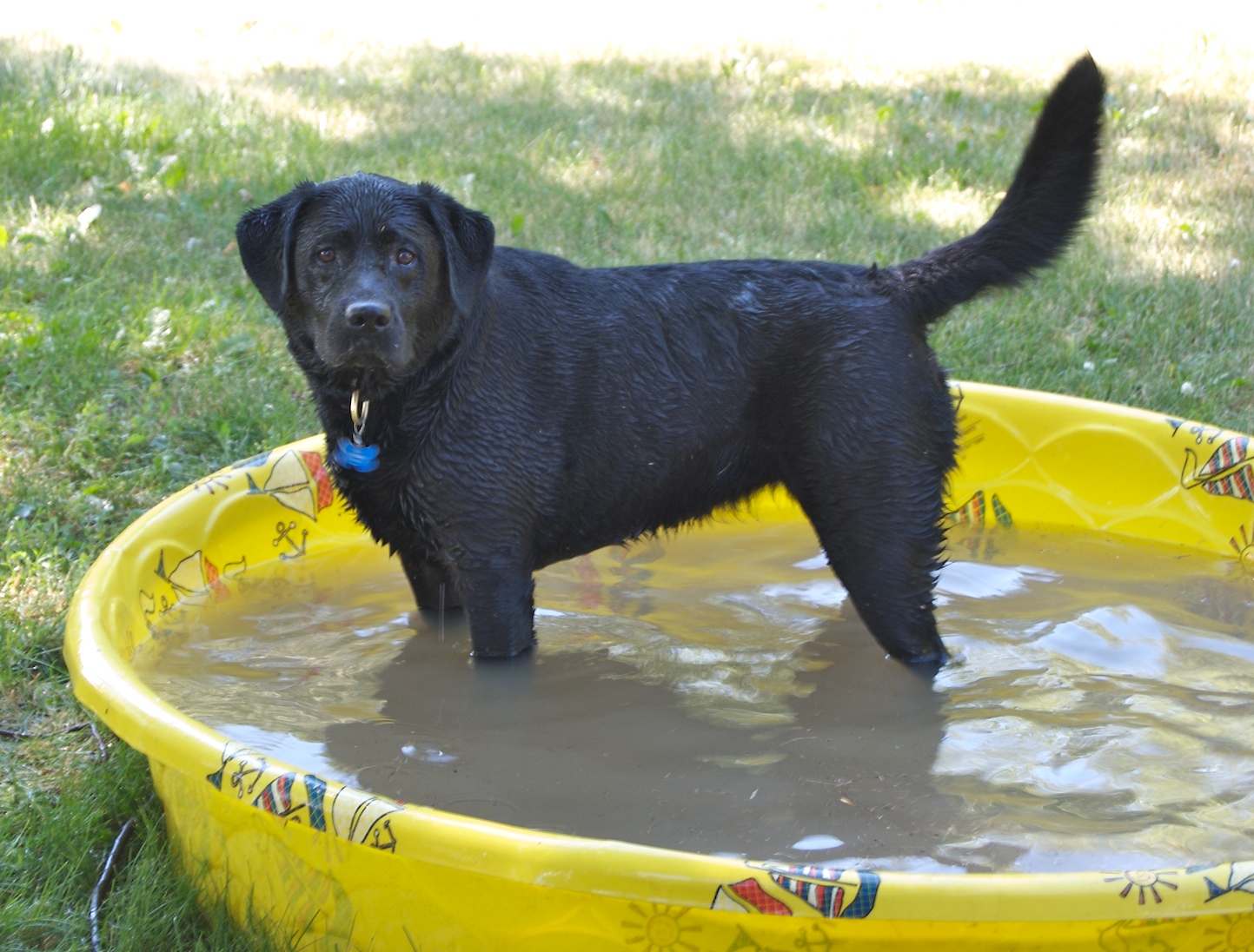
Is the Labrador Retriever Right For You?
An ideal sporting and family dog, the Labrador Retriever thrives as part of an active family or as a trusted hunting companion. A double-coated breed which sheds seasonally, regular grooming keeps his coat at its water-resistant best. Because of his even temperament and trainability millions of Americans own a Labrador Retriever as a pet. If you are considering purchasing a Labrador Retriever puppy, learn more. *Sporting Group; AKC recognized in 1917.
*Average size: from 55 to 75 pounds
*Outgoing and devoted companions; Water dog
In 5 Words
- Alert
- Docile
- Friendly
- Responsive
- Courgeuos
Characteristics
Learn About the Labrador Retriever
Description
Labs come in three coat color variations being of golden yellow, jet black, and occasionally chocolate brown; their coats are thick and double layered with a dense undercoat which is weather resistant. The Labrador Retriever’s hair is noticeably thick, short, and straight. Overall Labs are fairly easy dogs to groom, other than they shed a lot during the late spring and early summer months. If you’re a bit picky about your house being squeaky clean, then I recommend you should take out some time every 4 to 7 days to give your dog a quick good brushing outside, to take out any excess hair still hanging onto your Labs coat. Besides some shedding of little hairs during the later spring and early summer months, that being said Labs are still incredibly easy dogs to groom, especially when you compare these pups to medium and long haired dog breeds.
Labrador Retrievers are medium sized dogs to large sized dogs. Their bodies are relatively thick and muscular giving this dog breed a strong, sturdy built. Labradors have a body to leg ratio that is even and well proportioned, when comparing the length of their legs and bodies to one another. Labrador retrievers have flat, webbed paws with thick padded bottoms to them, which help to give Labs an upper hand with their swimming capabilities. These Retriever Gundogs also have moderately short tapering otter tails .
The Labrador Retriever has a beautifully broad head connected to a thick powerful neck. Labs carry medium sized kind brown eyes, which can sometimes come in hazels, greens, and blues too. This dog breed’s snout is of regular length and subtly wide. Labrador Retrievers have jaws with gentle but firm bites which is often a required quality for many Gundog breeds. Their ears are fairly small, slightly triangular, and expressive.
Short History of the Labrador
Early in the 1800s, some of the multipurpose dogs used in North America (mostly Canada) by hunters were shipped back to England. Many of these “water dogs” were of the Newfoundland type, but the smaller ones were often designated “St John’s” dogs. In England, the breed was developed and refined (probably with some flat-coated retriever input) into the breed we recognize today.
As is evidenced by their name, Labrador retrievers were bred and selected for their outstanding retrieving abilities, particularly in water. They have worked as partners with duck hunters in all kinds of weather and conditions. Their intelligence and desire to work as a partner with man has led to many other jobs, and to their current status as popular pets. Today, Labradors excel as service and guide dogs, family pets, scenting dogs for the military, customs and arson task force dogs, search and rescue dogs as well as hunting companions and performance dogs.
The breed’s good nature has propelled it to the number one ranking in popularity in America, a position it intends to keep. Despite their fame as indoor pets, they are even more at home outdoors. It should always be remembered that Labradors are water retrievers at heart and from early on, puppies show a strong desire to carry things around with them and a strong attraction to water, even puddles!
Temperament
One of the most popular breeds in the USA, the Labrador Retriever is loyal, loving, affectionate and patient, making a great family dog. Highly intelligent, good-natured, very willing and eager to please, it is among the top choices for service dog work. Labs love to play, especially in water, never wanting to pass up the opportunity for a good swim. These lively dogs have an excellent, reliable temperament and are friendly, superb with children and equable with other dogs. They crave human leadership and need to feel as though they are part of the family. Labs are easily trained. Some may be reserved with strangers unless very well socialized, preferably while they are still puppies. Adult Labs are very strong; train them while they are puppies to heel on the leash, and not to bolt out doorways and gateways before the humans. These dogs are watchdogs, not guard dogs, although some have been known to guard. They can become destructive if the humans are not 100% pack leader and/or if they do not receive enough mental and physical exercise, and left too much to their own devices. Show lines are generally heavier and easier going than field lines. Field lines tend to be very energetic and will easily become high strung without enough exercise. Labs bred from English lines (English Labs) are more calm and laid back than Labradors bred from American lines. English Labs mature quicker than the American type.
Caring for Your Labrador Retriever
General Health
Labrador Retrievers have a lifespan of 10 to 12 years. Some of the general health conditions that afflict Labradors are patellar luxation, canine hip dysplasia (CHD), and osteochondritis dissecans (OCD), which is canine elbow and shoulder dysplasia. This breed also occasionally suffers from distichiasis, exercise-induced collapse, diabetes, muscular dystrophy, tricuspid valve dysplasia, and entropion. Minor health concerns include retinal dysplasia, central progressive retinal atrophy (CPRA), hypothyroidism, hot spots, and cataract. Knee, hip, eye, and elbow tests should be included in the usual medical check-ups.
Grooming & Bathing
A weekly combing is all that is needed for a Labrador Retriever, since their water resistant coat is also designed to be soil and rubbish resistant. While brushing is a luxury rather than a necessity since its coat is designed to naturally care for itself, it does go along way to improving your Lab’s natural beauty and overall health. Regular exercise, on the other hand, is of the utmost importance. The Labrador is a high-energy dog that loves to play, and it should be given the opportunity to do this on a daily basis. When possible, Labrador Retrievers should be allowed to swim, as it is one of their favorite activities. Pools, beaches, rivers, lakes; all are sporting fun for a Lab. Just as with a child, you will want to safeguard your young Lab while it is in the water, to make sure it feels safe and has a way of getting out of the water. Over time, and with confidence, it will learn, but young swimmers can panic or tire quickly.
Exercise & Training
Labrador Retrievers are energetic dogs, delighted to work and play hard. They need to be taken on a daily, brisk, long walk, jog or run alongside you when you bicycle. While out on the walk the dog must be made to heel beside or behind the person holding the lead, as in a dog’s mind the leader leads the way, and that leader needs to be the human. They will be in their glory if you give them a job to do. Gain weight easily, do not over feed. Labrador Retrievers could just be the dog for you, and unlike some dog breeds that are highly intelligent, Labradors also respond highly towards obedience training. These loving Gundogs make great canine companions for people of all ages; Labradors are loyal and trustworthy dogs towards their owners and most everyone that they come in contact with. These canines have approachable friendly personalities and temperaments that practically make you fall in love with this dog breed immediately. Labrador Retrievers have not only been sought out for their amazing abilities as Gundogs and popular show dogs, but Labradors have become such a popular pet because of their amazing characters and temperaments.
Overall, Labs are an easy breed of dog to care for, but they still have their requirements in which must be met for them to stay mentally healthy, emotionally healthy, and physically healthy canines. One of the main requirements being that labsneed quite a lot of exercise, although many pet owners mistakenly neglect their animals because they do not give their Labradors the proper exercise that they so desperately need. This is why you’ve more than likely noticed quite a number of obese and overweight Labs. Labrador Retrievers are Gundogs, and like 95% of Gundogs they have to have decent exercise levels for them to stay healthy.

